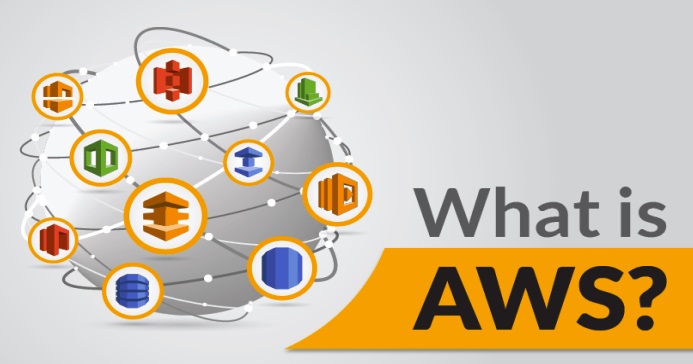AWS Penetration Testing: What It Is, Features, and Why You Need It
AWS penetration testing is a process of assessing the security of systems that are hosted on Amazon Web Services (AWS). The primary objective of an AWS penetration test is to detect security flaws that are not picked up by the cloud provider's inherent security system and might be exploited by third parties. AWS offers a wide range of features and services, so it's important to understand which ones are most vulnerable to attack. In this blog post, we will discuss the basics of AWS penetration testing and why it's essential for businesses that rely on the cloud.

Why Is AWS Penetration Testing Essential?
AWS penetration testing is essential for businesses that rely on the cloud. By identifying and fixing vulnerabilities, you can reduce the risk of your systems being compromised by hackers. Penetration testing may also assist you in keeping up with industry regulations like PCI DSS and HIPAA.
Features Offered By AWS Penetration Testing
AWS penetration testing can be used to assess the security of a wide range of features and services, including:
- Amazon Elastic Compute Cloud (EC²): EC² is a popular service for hosting web applications and servers. It's important to test the security of EC² instances because they can be easily accessed by unauthorized users if they're not properly configured.
- Amazon Simple Storage Service (S³): An online storage service, S3 is often used to store sensitive data. It's important to test the security of S³ buckets. Misconfigurations in this can lead to severe vulnerabilities.
- Amazon Relational Database Service (RDS): RDS is a type of database platform that helps manage sensitive information. Securing the RDS ensures that no sensitive data is mishandled.
Steps For AWS Penetration Testing
- 1. Let's get started with the first stage of AWS penetration testing: reconnaissance. Reconnaissance is the act of collecting information about a system or environment. This knowledge may be used to identify potential flaws and exploit them. There are many different methods for conducting reconnaissance, but we will focus on two of the most common: Google hacking and social engineering.
Google hacking is a process of using Google to find information that is not supposed to be publicly available. If the site address is hard to remember, you might use search operators like "site:" or "inurl:". For example, you could use the following search query to find websites that are using the WordPress CMS: "inurl:wp-admin". Social engineering is a process of tricking someone into revealing information that they should not. This can be done over the phone, through email, or in person.
- 2. It's time to move on to phase two: enumeration, once you've got enough information on your target.
The task of enumeration is to discover and capitalize on system flaws. This can be done by using various tools and techniques, such as port scanning, banner grabbing, and OS fingerprinting. It's also possible to exploit these flaws to gain access to private information or even take control of the system.
Nmap is a great example of a typical enumeration tool. Nmap is an application that allows you to check for open ports and services on a system. This information can be used to identify potential vulnerabilities that can be exploited. Another common technique is banner grabbing. Banner grabbing is the process of connecting to open ports and retrieving banner information, such as the software version and operating system. Identifying these characteristics can assist in determining possible security threats.
- 3. Once you have identified some potential vulnerabilities, it's time to move on to step three: exploitation.
The process of obtaining access to a system or data by exploiting a vulnerability is known as exploitation. This can be done by writing your own exploit code or by using a pre-existing exploit. After getting access to the system, you have complete freedom over it! This could include stealing data, taking control of the system, or just wreaking havoc.
Metasploit is a well-known penetration testing software. Metasploit is a tool that allows you to exploit vulnerabilities in a system. This can be done by writing your own exploit code or by using a pre-existing exploit. Metasploit also has a number of useful features, such as the ability to launch denial of service attacks and pivot through networks.
- 4. Now that we have covered the basics of exploitation, let's move on to step four: post-exploitation.
Post-exploitation is the process of taking advantage of a system that you have already compromised. This could include stealing data, installing backdoors, or just plain wreaking havoc. There are many different methods for carrying out post-exploitation, but we will focus on two of the most common ones: privilege escalation and lateral movement.
Privilege escalation is the process of gaining higher levels of access to a system that you already have access to. This can be done by exploiting vulnerabilities or by using social engineering techniques. Lateral movement is the act of moving from one system to another. This can be done by exploiting vulnerabilities, such as password reuse, or by using tools like Metasploit's psexec module.
And that's it! These are the four well-explained steps for conducting an AWS penetration test. You can ensure that you find and exploit all of your system's flaws by following these steps.
Tools For AWS Penetration Testing
There are a number of tools that can be used for AWS penetration testing, including:
- Astra's Pentest: You can use this for a thorough evaluation of your cloud infrastructure's security strength and root out vulnerabilities.
- Amazon Inspector: Inspector is an automated security assessment tool that can be used to test the security of EC² instances.
- Amazon Web Services Command Line Interface (AWS CLI): Automating penetration testing procedures with the AWS CLI is possible.
- Amazon CloudWatch: CloudWatch can be used to monitor AWS resources for suspicious activity.
- Amazon Trusted Advisor: Trusted Advisor is a security assessment tool that can be used to test the security of AWS accounts.
- Amazon Elastic MapReduce (EMR): EMR is a large-scale data processing service. It's critical to test the security of EMR clusters since unprivileged users can gain access to them if they're not properly secured.
- Nmap: Nmap is a popular network exploration and security auditing tool. It can be used to look for open ports on Amazon EC2 instances.
- Metasploit: Metasploit is a popular exploitation framework. It can be used to exploit vulnerabilities on EC² instances.
Tips for Preventing AWS Penetration Testing from Becoming a costly Mistake
Here are a few tips to keep in mind when performing AWS penetration testing:
- Always use the latest version of Inspector, the AWS CLI, and other tools.
- Be sure to test all aspects of an application or system, including the front-end, back-end, and database.
- When testing, use the same account that will be used in production. This will guarantee that the tests are real.
- Be sure to document your findings and recommendations.
- Check for any backdoors or potential security concerns on a regular basis.
-Vulnerabilities can be introduced at any time, so it's important to stay up-to-date on security risks.
The basics of AWS penetration testing can be daunting, by following these tips, you can ensure that your AWS environment is secure and compliant with industry regulations. Stay safe out there!
Pros And Cons For AWS Penetration Testing
AWS penetration testing has a number of benefits, including:
- identifying and fixing vulnerabilities before they can be exploited by hackers,
- helping to comply with industry regulations,
- providing a realistic view of how an attacker would view your system.
However, AWS penetration testing also has some drawbacks, including:
- The potential for false positives (vulnerabilities that are reported but do not actually exist) can cause a loss of time.
- The need for specialized skills and knowledge makes cloud penetration testing expensive.
- the possibility of Denial of Service (DoS) attacks if tests are not properly configured.
Overall, AWS penetration testing is a valuable security tool that should be used by businesses that rely on the cloud. By understanding the pros and cons of AWS penetration testing, you can make the most of this valuable resource.
Conclusion
AWS penetration testing is an essential process for businesses that rely on the cloud. By identifying and fixing vulnerabilities, you can reduce the risk of your systems being compromised by hackers. Use the ideas in this blog article to keep your AWS infrastructure safe.
You should read it
- Learn about Penetration Testing
- What is Penetration Testing as a Service (PTaaS)?
- Top 10 best pentest tools 2021
- Penetration Testing Online: What It Is, Why It's Important, and How to Do It
- How to conduct IoT pentest with Kali Linux
- What is Automation testing?
- 6 steps to plan harmful software counter-attacks
- How to Beat the Hackthissite.org Basic Missions
- Introducing Kali Linux operating system
- Learn about the NodeZero operating system
- Learn about Parrot Security OS
- Testing of system maintenance






 Learn about Penetration Testing
Learn about Penetration Testing What is Pentest? Learn about Penetration Testing (penetration testing)
What is Pentest? Learn about Penetration Testing (penetration testing) What is Penetration Testing as a Service (PTaaS)?
What is Penetration Testing as a Service (PTaaS)? Top 10 best pentest tools 2021
Top 10 best pentest tools 2021 Penetration Testing Online: What It Is, Why It's Important, and How to Do It
Penetration Testing Online: What It Is, Why It's Important, and How to Do It Learn about Parrot Security OS
Learn about Parrot Security OS